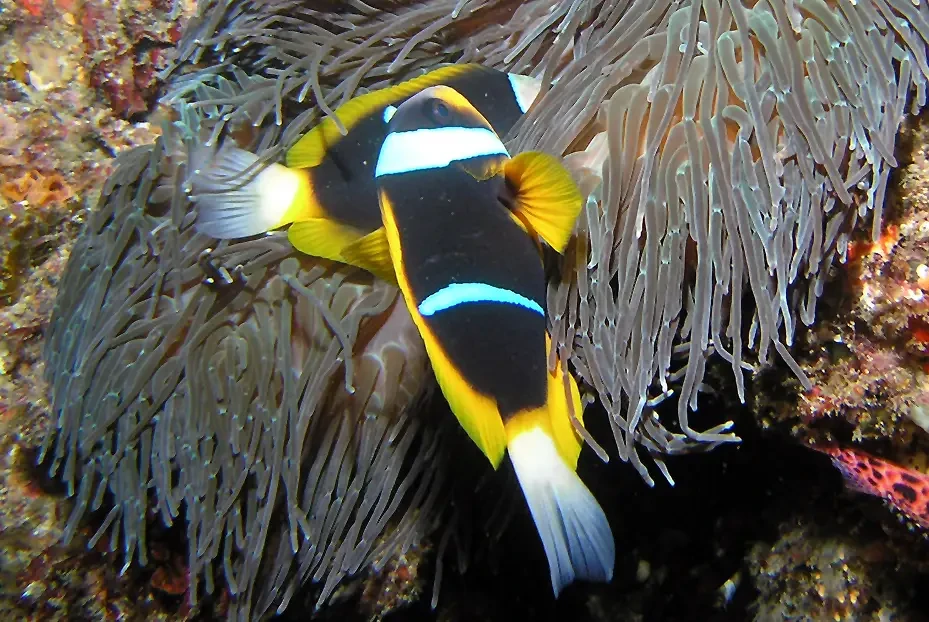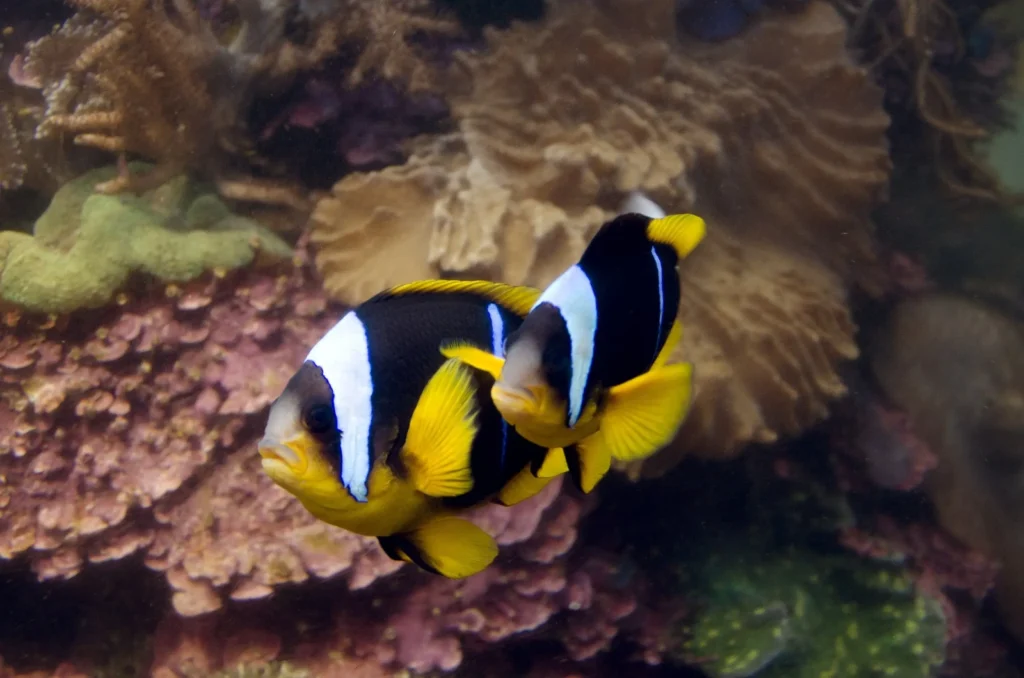Among more than 30 known species of clownfish, allard's clown (Amphiprion allardi) is different bright color, unique habitat and strong connection with sea anemones. This fish is common in the western Indian Ocean, particularly along the coast of East Africa, off the islands of Zanzibar, Madagascar and Seychelles.
📌 Why is Allard's clown interesting?
✔ Has two white cross belts, like A. clarkii, but with more saturated colors
✔ A rare species in aquariums, because it is found only in certain regions of Africa
✔ Next of kin clark the clown, but less so with other partner anemones
✔ Known for its endurance and longevity in nature and aquariums
In this article, we will look at all the features Amphiprion allardi, from classification and appearance to behavioral characteristics, breeding and conditions of keeping in the aquarium.

Scientific classification
✔ The Kingdom: Animals (Animalia)
✔ Type: Chordal (Chordata)
✔ Class: Lucheperi pisces (Actinopterygii)
✔ Row: Perch-like (Perciformes)
✔ Family: Pomacentrovye (Pomacentridae)
✔ Gender: Amphiprions (Amphiprion)
✔ View: Amphiprion allardi
🔍 The species was described in 1970 and named after Gordon Allard, a British ichthyologist.
Appearance and coloring
🎨 Key features:
✔ Bright black or dark brown body with two white stripes
✔ The head has yellowish-orange shade
✔ Abdominal, anal and caudal fins bright yellow
✔ Length up to 14 cm, medium size – 10-12 cm
✔ Females always larger than males
📌 Allard's clown resembles A. clarkii, but its colors are more saturated, and the caudal fin is predominantly yellow, which distinguishes it from its close relatives.
Habitat and habitat
🌍 Where does it live?
✔ Western Indian Ocean
✔ Off the coast Tanzania, Kenya, Zanzibar, Madagascar and Seychelles
🏝 Typical biotopes:
✔ Inhabits surrounded by coral reefs and lagoons
✔ Depth of living from 1 to 25 meters
✔ Must interact with sea anemones

🌊 Symbiosis with anemones:
Like all clownfish, Amphiprion allardi it interacts with anemones, which protect it from predators. Main partner anemones:
✔ Stichodactyla gigantea (Giant anemone)
✔ Heteractis crispa (Anemone Reel)
✔ Heteractis magnifica (Giant Anemone)
📌 Unlike other clowns, the Allard's clown is able to co-exist with several species of anemone at once.
Lifestyle and behavior
🔹 Territoriality
✔ Very much territorial department - protects the anemone from other fish
✔ Aggressive towards other clowns, especially within its own reef
🔹 Social structure
✔ Lives in a hierarchical family - one female, one male and several younger individuals
✔ The female is the largest and most dominant individual
🔹 Hermaphroditism
✔ If the female dies, the largest male changes sex and becomes a female
📌 This feature makes it possible to maintain the stability of the population even in the event of the loss of the dominant female.
Diet and nutrition
🍽 In nature:
✔ Small crustaceans (copepods, mysids)
✔ Zooplankton
✔ Seaweed
🍽 In the aquarium:
✔ Live and frozen food (bloodworm, Artemia)
✔ Granulated feed
✔ Herbal Supplements (Spirulina)
📌 A balanced diet helps to maintain bright colors.

Reproduction and development
🔹 Pack structure
✔ Dominant female + male + several small individuals
✔ Only the female lays eggs, male grooming her
🔹 Spawning
✔ Puts it off up to 500-1000 eggs near the anemone
✔ The male vents the eggs and protects them from threats
✔ Larvae hatch in a few seconds. 6-10 days
📌 After hatching, the fry drift in plankton for several weeks before settling on reefs.
Keeping in the aquarium
🟡 Basic requirements:
✔ Aquarium capacity: from 150-200 liters
✔ Water temperature: 24–28°C
✔ Salinity: 1.020–1.025
✔ Filtering: powerful, with good circulation
🟡 Compatibility:
✔ Peaceful reef fish (gubani, surgeons, shrimps)
✔ Other clowns only in large aquariums
🟡 Incompatibility:
❌ Other types of clowns (except a couple)
Great large carnivores ( triggerfish, moray eels)
📌 This species adapts easily to aquarium life, but it requires an anemone to behave naturally.
Threats and protected status
❗ Main threats:
✔ Destruction of coral reefs
✔ Catch for aquarium trade
🌱 Is it going to disappear?
✔ Population stable, although poorly studied
✔ Protected within the Indian Ocean Conservation Areas
📌 Conservation of coral reefs is key to the future of this species.
Conclusion
Allard's Clown – a rare and beautiful view, living exclusively off the coast of Africa. He bright colors, aggressive nature and endurance make it an interesting choice for aquarists and underwater explorers.
💙 If you are looking for a unique clown – Amphiprion allardi will be a real gem of your aquarium! 🐠✨